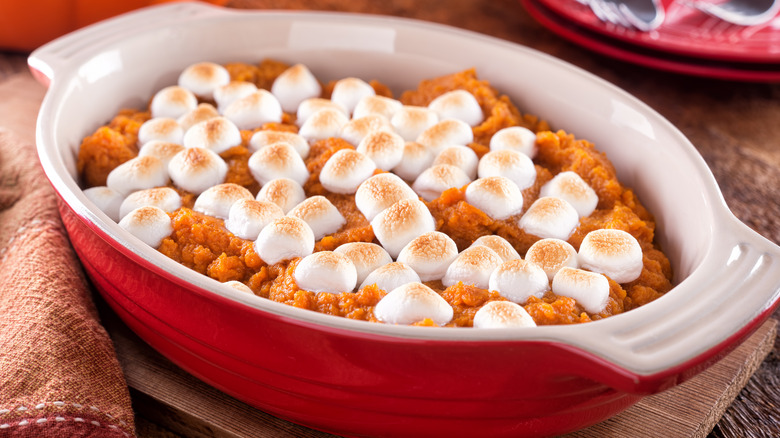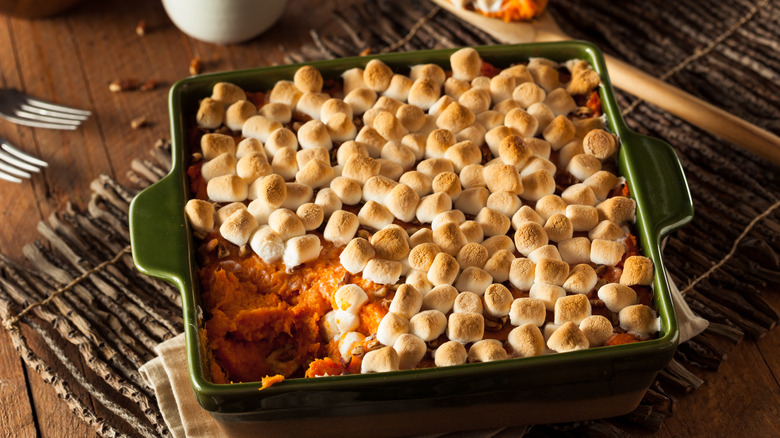The Historic Origins Of Marshmallow-Topped Sweet Potatoes
As the Thanksgiving holiday approaches, cooks around the United States arm their pantries, refrigerators, and freezers with all the ingredients needed for the essentials of the dinner table: a big ol' turkey for the main event, plenty of potatoes for the mashers, tart cranberries for the sauce, and canned or fresh pumpkin for the pie. And they mustn't forget, of course — a bag of marshmallows.
Typically associated more with camping than with a refined dinner, on Thanksgiving Day, marshmallows somewhat inexplicably find their way onto the table — not as dessert, mind you, but alongside the savory dishes. We're talking about sweet potato casserole and its puffy burnished cap of marshmallows, a Thanksgiving side that's extremely common but also widely reviled for being way too sweet and just, well, weird (via Quartz). Sweet potatoes are, true to their name, extremely sugary, and since marshmallows' primary ingredients are sugar and corn syrup (via HEB), the two together are a sweet affair. One might wonder: Why were these two ingredients paired in the first place?
Sweet potato casserole was first promoted by a marshmallow company
Although it might seem strange to eat a dessert-like side dish alongside savory food, such sweet dishes have been common in American cooking since way back, according to Kitchn. The origins of the famous Thanksgiving recipe are traced back to America's first cookbook "American Cookery" by Amelia Simmons, which cites predecessors as a 1796 "potatoe pudding" calling for half a pound of sugar to be folded into boiled, mashed sweet potatoes, and an 1840 "yam pudding" adding cinnamon and a whipped egg white topping to the concept in the cookbook "Directions for Cookery."
But it wasn't until 1917, according to Saveur, that marshmallows, which the Angelus Marshmallow company had recently commercialized, joined the party. Angelus hired Janet McKenzie Hill, founder of "The Boston Cooking-School Magazine," to develop recipes for a pamphlet encouraging home cooks to use marshmallows as an everyday ingredient, not just a special occasion one. The pamphlet contained plenty of now-classic recipes, including marshmallow-studded fudge, hot cocoa with marshmallows, and the first known recipe for mashed sweet potatoes baked underneath a marshmallow topping.
In subsequent years, Angelus — which later changed its name to Campfire – published additional recipe booklets promoting the use of marshmallows, with 1930 and 1950 editions both containing sweet potato-marshmallow casseroles (via Kitchn). So there you have it: This sweet idea started with a company's campaign to sell more of its product, a movement whose success is evident every Thanksgiving Day.

